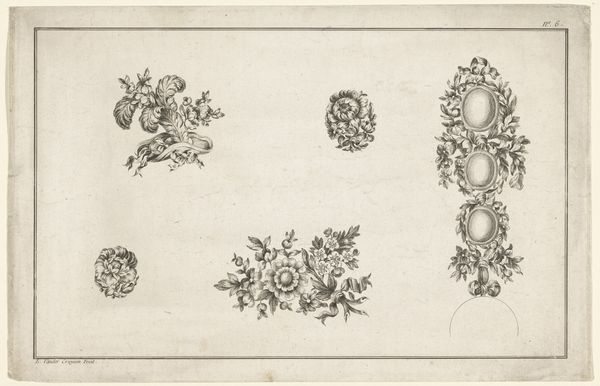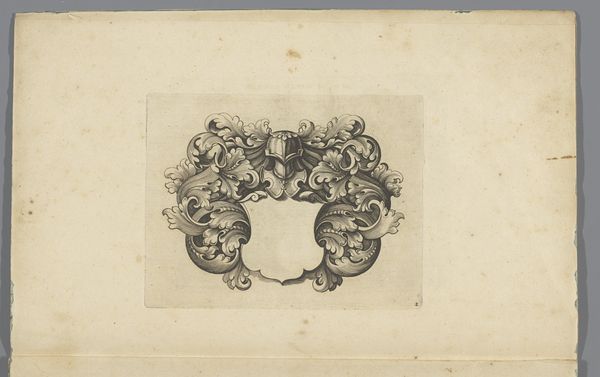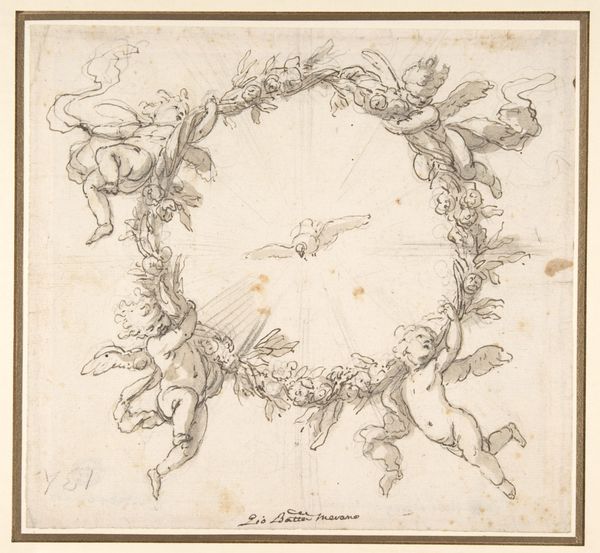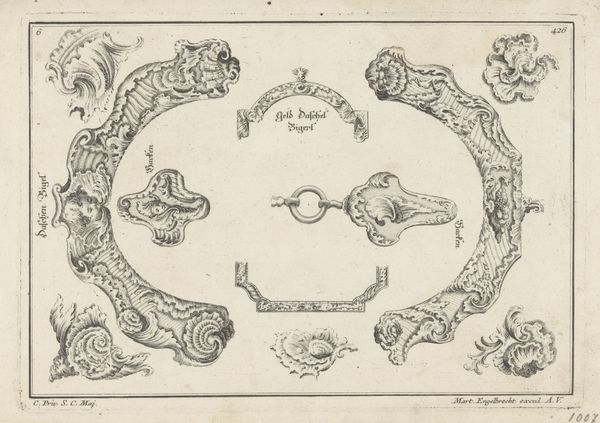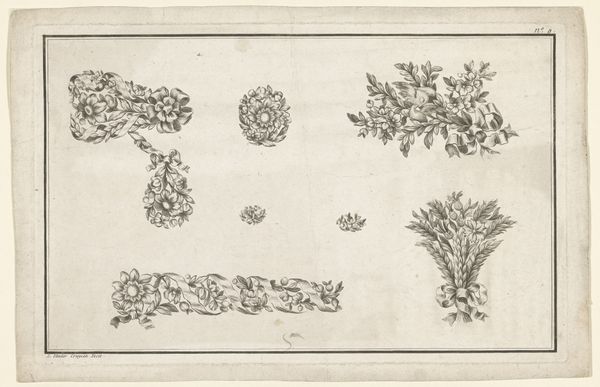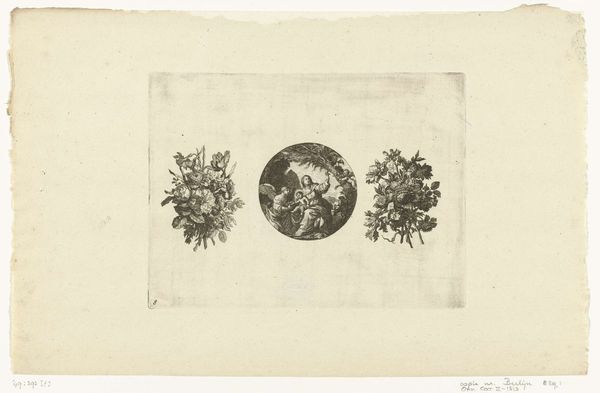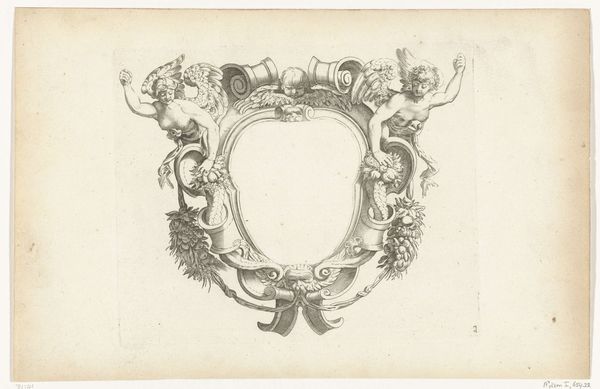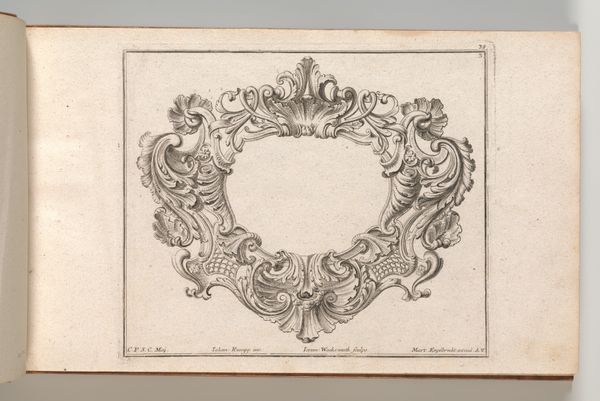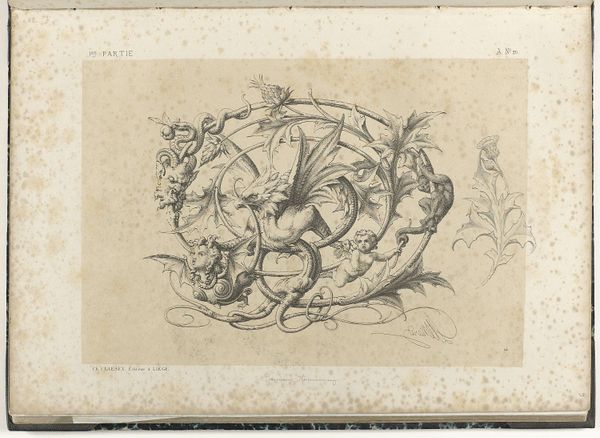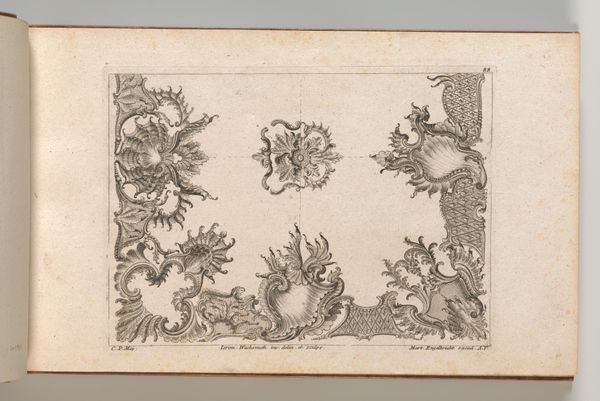
Dimensions: height 229 mm, width 367 mm
Copyright: Rijks Museum: Open Domain
Editor: Here we have “Ketting met strikken,” or “Chain with Ribbons,” an etching and engraving by L. van der Cruycen from 1770. It feels so meticulously planned, almost like a blueprint for a craftsperson. How do you see this work? Curator: This piece speaks volumes about the commodification of design and the breakdown of the traditional artist-craftsman divide. Consider the purpose: a pattern for reproduction. The labor has already been done by the artist who designed it; the end consumer need only copy. Editor: So, it's like pre-fabricated artistry? Curator: Precisely! It challenges the preciousness of "original" art. Think of the social context. 1770, the rise of the bourgeoisie, increasing demand for decorative objects, new markets… all of that fueled the need for readily available patterns like this. It lowers the bar for participation, creating more accessibility. Editor: Interesting. So the engraving isn't just the art object itself, but also a tool? How would that impact the perceived value? Curator: Exactly! The value shifts from inherent artistic skill to the object's ability to facilitate further production. It's a form of mass production on a small scale. This isn't high art destined for a museum; it’s a practical template embedded within economic networks of consumption and display. Look closely at the lines – can you imagine the etcher and engraver's physical process? It democratizes aesthetics through the craftsperson’s hands. Editor: I never thought of it that way, how the process of its making democratizes art. Thanks! Curator: A shift from thinking of singular genius to collective and industrial output. Food for thought.
Comments
No comments
Be the first to comment and join the conversation on the ultimate creative platform.
